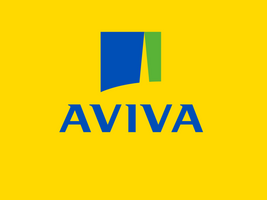Title Page
-
Conducted on
-
Prepared by
-
Location
-
To view our Loss Prevention Standard that supports this checklist, please view the following link : https://broker.aviva.co.uk/documents/view/aviva_managing_change_during_lockdown_and_coronavirus_lps.pdf
Managing Change During Lockdown Checklist
Energy/Pandemic Plan
-
1. Do you have a formal Emergency Response/Pandemic Plan that identifies the actions to be taken by the organisation during a pandemic outbreak?
-
2. Has your organisation identified an individual (and deputy) who will have responsibility for leading and managing the response to a pandemic?
-
3. Does your organisation's Pandemic Plan consider the following:<br><br>• Names of members of the Pandemic Team including contact details?<br>• Names and contact details for deputies?<br>• Roles and responsibilities of team members?<br>• Notification of incidents?<br>• Procedures for invocation of the plan?<br>• Communications - external?<br>• Communications - internal, including advice to employees regarding recognition of symptoms, how to reduce the spread of infection, hygiene controls and procedures for any individual who contracts the virus?<br>• Escalation procedures?<br>• Contact details of staff/key stakeholders/key customers/key suppliers/emergency services?<br>• Task checklist, especially during the first few weeks such as: what/by whom/when/tasks signed-off?<br>• A Critical Activities Action Plan (should be created as part of a Business Impact Analysis carried out, as should activities required to recover by Recovery Time Objectives set)?<br>• Is your Cyber Security Plan regularly updated to consider the continuously changing situation?<br>• Return to business as normal - any activity required to confirm business as normal?<br>• Supporting information such as location of documents, and key media outlets to be monitored during any outbreak such as the World Health Organization, GOV.UK, Public Health England?<br>• Ownership of the plan?<br>Details of testing and maintenance of the plan including what type of test/when/outcomes/amendments to plan/date of<br>next test?<br>
Buildings Temporarily Unoccupied
-
4. • Have you reviewed your risk assessments to consider the changing risk/lack of occupancy and supervision in place?<br>• Have all processes ceased (and not run unmanned) and been shut down safely?<br>• Is the building temperature maintained in all areas to a minimum of 5°C to reduce the risk of freezing pipes and other fluid systems?<br>• Have all utilities been isolated, other than those which are required for fire and/or security protection systems and safe/critical systems?<br>• Have all fuel tanks, apparatus and pipes been drained down and the contents removed?<br>• Are all external areas clear of waste and combustible materials?<br>• Have letter boxes and openings been sealed and secured and post redirected if necessary?<br>• Is the critical maintenance of plant, machinery and equipment up to date?<br>• Are all fire protection, detection, and security systems active and monitored remotely where possible?<br>• Has there been any changes to the police or public fire brigade response, and if so, have you notified your insurers?<br>
Security of Buildings Temporarily Unoccupied
-
5. •. Has the adequacy of security controls been assessed based on the likely period of unoccupancy and type of business, particularly in high crime areas?<br>•. Has the intruder alarm been tested, is it monitored and fully operational?<br>•. Have you identified and rectified any vulnerable areas?<br> Is there a list of key holders who can be contacted in times of<br>emergency?<br>• Have you moved high value items into secured stockrooms and out of view?<br>• Have all keys to the premises been removed and in the possession of dedicated key holders?<br>• Is there sufficient lighting in operation at the premises/surrounding area?<br>• If provided, is your CCTV operational and providing good quality images?<br>• Have you considered a mobile phone app that allows connectivity and a vocal capacity to engage with any intruder?<br>• Has all cash been removed from the premises (post a sign on the door stating that no cash or valuables are on the premises)?<br>• Have all internal and external doors been secured including shutters and grilles?<br>• Is glass protected by laminated glass or security film to make it more resistant to a physical assault?<br>• Is the site entrance protected by anti-ram security bollards and are these deployed?<br>• Have vehicles been secured, considering their proximity to buildings and each other?<br>
-
6. Have you liaised with your neighbours?<br>Can you work together as a neighbourhood or community to provide a more rounded security presence?<br>
-
7. If not already provided have you considered the provision of a physical security presence?
-
8. In the period with no occupancy have you established a formal and recorded physical patrol of the site as often as possible, or at least once per week or if not practicable then when it is safe to do so?<br>Although some sites would normally require daily inspections given their exposures, such visits can only take place when it is safe to do so.<br>
-
6. Do you need any more assistance or guidance on your security provision?<br>If so, please contact Aviva Risk Management Solutions.<br>
Completion
-
Additional Comments
-
Completed by: (Name and Signature)
-
Please Note:
This document contains general information and guidance only and may be superseded and/or subject to amendment without further notice. Aviva has no liability to any third parties arising our of ARMS' communications whatsoever (including Loss Prevention Standards), and nor shall any third party rely on them. Other than liability which cannot be excluded by law, Aviva shall not be liable to any person for any indirect, special, consequential or other losses or damages of whatsoever kind arising out of access to, or use of, or reliance on anything contained in ARMS' communications. The document may not cover every risk, exposure or hazard that may arise and Aviva recommends that you obtain specific advice relevant to the circumstances.














